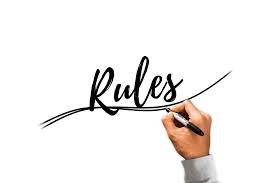Do you ever feel like your money slips through your fingers and no matter how much you earn, five days after payday you’re already stressed about your bank balance? If so, you’re not alone. The good news: you can take back control. In this article, we’ll show you budgeting made simple a clear, practical process to get your spending in check, build a money-management plan that works, and finally feel confident about your finances. You don’t need fancy spreadsheets or expensive apps just a smart system and commitment. Let’s dive in.
Why Budgeting Is More Important Than Ever
The hidden cost of not having a budget
Without a clear monthly budget, you’re more likely to overspend, rack up debt, or miss savings opportunities. A lack of plan leads to reactive spending, surprise bills and financial stress.
What “budgeting made simple” really means
“Budgeting made simple” means using straightforward tools and steps so you can manage your money rather than being managed by it. It’s about creating a clear cash flow plan, setting financial goals, and tracking spending habits so you’re always in control.
Step-by-Step Guide: How to Budget Money in 6 Easy Steps
Step 1 – Set realistic financial goals
- Decide what you’re budgeting for: e.g., building an emergency fund, reducing debt, saving for a big purchase.
- Use the SMART framework: Specific, Measurable, Achievable, Relevant, Time-bound.
Step 2 – Track your income and expenses
Use a simple table to record:
| Category | Monthly Amount |
|---|---|
| Total Income | $ ________ |
| Fixed Expenses | $ ________ |
| Variable Expenses | $ ________ |
| Savings / Debt-Pay | $ ________ |
| Balance | $ ________ |
Tracking helps you see your spending habits and identify where you can optimise.
Step 3 – Create your budget worksheet
Here’s a basic structure:
- Income: salary, side-hustle, other
- Fixed costs: rent/mortgage, utilities, insurance
- Variable costs: groceries, entertainment, transport
- Savings & debt payments: emergency fund, loans
Aim to allocate at least 20% of your income to savings or debt-reduction if possible.
Step 4 – Choose your budgeting tool
You can pick from:
- A pencil-and-paper budget worksheet
- A spreadsheet (Google Sheets, Excel)
- A budgeting app
The key: pick something you’ll actually use consistently.
Step 5 – Monitor and adjust your budget
Every week or month:
- Compare actual spending to budgeted spending
- Identify variances (overspending/underspending)
- Adjust next month’s budget accordingly
This allows you to refine your plan and stay on track.
Step 6 – Build habits and automate where possible
- Automate savings transfers each payday
- Schedule recurring payments for fixed costs
- Set alerts for when you approach budget limits
This helps you keep up the momentum and makes the plan sustainable.
Common Budgeting Mistakes and How to Avoid Them
Mistake 1 – Being too rigid
If your budget is too tight, you’ll feel deprived and may abandon it. Leave some “fun money” for variable expenses.
Mistake 2 – Ignoring small expenses
Small purchases (coffee, snacks, subscriptions) add up. Track them—skip or modify if needed.
Mistake 3 – Not updating your plan
Life changes (salary increase, new loan, move house). Update your budget when your situation changes.
Mistake 4 – Expecting perfection
Your first budget may not be perfect. It’s a process. The key is consistency, not perfection.
Why This Approach Works
- You start with clear goals → aligns your money with what matters to you.
- You track income & expenses → brings awareness to spending that was previously hidden.
- You build a flexible worksheet → gives structure but allows adjustment.
- You monitor and automate → builds long-term sustainable habits.
By following this simple system, you’re turning budgeting from a chore into a tool for financial freedom.
Bonus: Budgeting Tools and Worksheets
Here are some helpful resources:
- Free budget worksheet (downloadable PDF)
- Mobile budgeting app to track expenses on the go
- Spreadsheet template you can customise
Having tools at hand makes your “budgeting made simple” plan even easier to follow.
FAQ
Q1: What is budgeting made simple and why should I do it?
Budgeting made simple means using a streamlined money-management plan (income tracking, expense tracking, savings) so you can take control of your finances instead of guessing each month.
Q2: How often should I review my budget?
It’s best to review weekly for short-term tracking and monthly for a full budget review. Regular reviews help you stay aligned with your spending habits and goals.
Q3: Can beginners really manage a budget, or is it too complex?
Absolutely. With the steps above—setting realistic goals, tracking, using a worksheet—you can set up a budgeting plan for beginners that works. The key is consistency, not complexity.
Q4: What if I have irregular income?
If you have variable income (freelance, commissions), take an average of the past 3-6 months as a baseline. Build your monthly budget based on the lowest average, then funnel extra income into savings or debt when you exceed the baseline.
Q5: How much of my income should I save each month?
A common rule is to aim for at least 20% of your income directed toward savings, debt reduction or investments. Even if you start smaller, the key is making it a habit and increasing over time.
Conclusion & Call to Action
Budgeting doesn’t have to be intimidating or overwhelming. By following the simple framework of budgeting made simple, you’ll gain clarity on your income and expenses, build a realistic money-management plan, and set yourself up for financial freedom. Ready to make your finances work for you instead of against you?
💡 Try our AI Automation agency here to make your company grow!
For more update Elite Era Trends













Leave a Reply